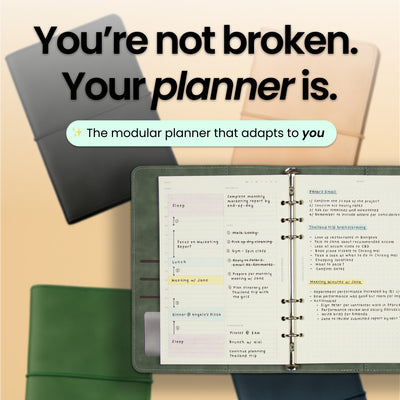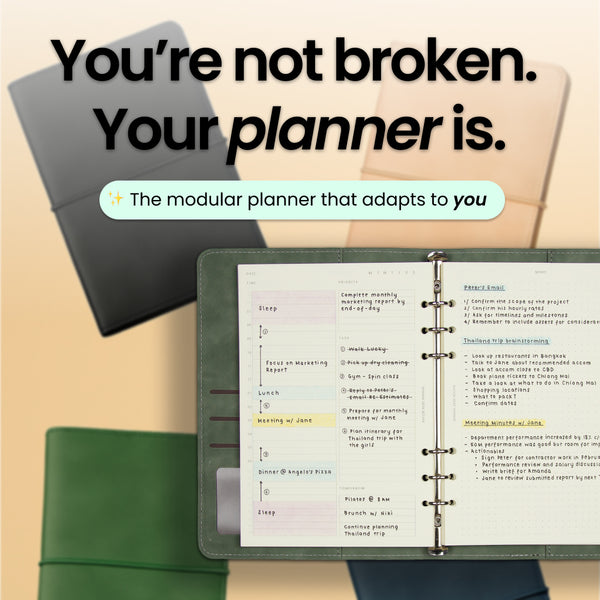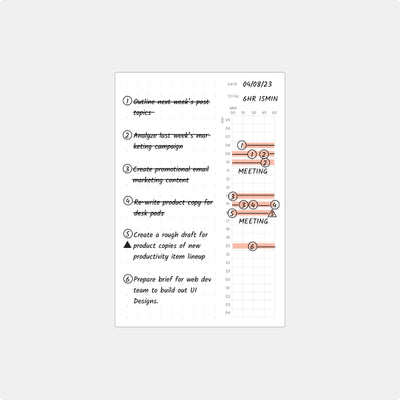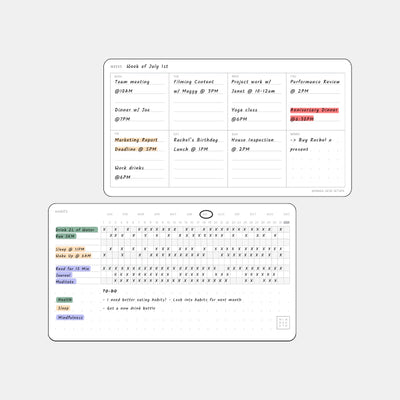SMALL BUSINESS OWNERS
The Task & Time system can be an invaluable tool for small business owners, helping them manage their daily operations, plan projects, and keep track of essential tasks. Here’s how small business owners can utilize this system to enhance their productivity and time management.
DAILY OPERATIONS
Plan Your Day: Write your daily tasks and breaks on Task & Time cards to stay organized.
Example Card for 15 June:
9:00-10:00 AM: Review and respond to emails
10:30-11:30 AM: Team meeting to discuss project status
12:00-1:00 PM: Lunch break
1:30-3:00 PM: Work on marketing strategy
3:30-5:00 PM: Client consultations
PROJECT PLANNING
Break Down Projects: Use a new card each day to focus on different aspects of a project.
Example Card for 16 June:
9:00 - 10:00 AM: Research market trends
10:30 - 11:30 AM: Outline project plan
1:00 - 2:30 PM: Develop project timeline
3:00 - 4:00 PM: Assign tasks to team members
TASK MANAGEMENT
Divide Tasks into Daily Goals: Each day’s card can include steps towards completing larger business goals.
Example Cards for 15 June:
9:00 - 10:00 AM: Prepare financial reports
11:00 - 12:00 PM: Update website content
1:00 - 2:00 PM: Order office supplies
Example Cards for 16 June:
9:00 - 10:00 AM: Finalize financial reports
11:00 - 12:00 PM: Schedule social media posts
1:00 - 2:00 PM: Follow up with suppliers
HOW TO CREATE TASKS
Determine what needs to be accomplished each day based on ongoing projects, client needs, or business operations.
Example: For a marketing campaign, identify which tasks need completing each day.
To break down a large task as a small business owner, start by defining the end goal and dividing the project into key phases or milestones.
Then, create specific, actionable subtasks for each phase, assign deadlines, and allocate resources.
Finally, track progress regularly, adjust timelines if necessary, and use a project management tool to stay organized and on schedule.
To prioritize daily tasks, first identify urgent and important tasks that must be completed to move the business forward, using tools like the Eisenhower Matrix (urgent vs. important). Focus on high-impact tasks that align with your long-term goals, and delegate or eliminate low-priority items when possible.
Break large, overwhelming tasks into smaller, manageable steps, and assign time slots to ensure focus.
Finally, review and adjust priorities daily to account for new developments or changes.
The best way to allocate specific times for tasks is to use time-blocking, where you assign dedicated blocks of time to each task based on its priority and estimated duration.
Start by identifying your most important tasks and schedule them during your peak productivity hours, then slot in less critical tasks around them. Incorporate buffer times between tasks to accommodate unexpected interruptions or delays, and use techniques like the Pomodoro method (e.g., 25-minute focused work followed by short breaks) to maintain focus and avoid burnout.
Regularly review and adjust your schedule to ensure flexibility and that you're staying on track with your goals.
To review and adjust your to-do list and time blocks daily, start by setting aside a few minutes at the end of each day to assess what you’ve accomplished and identify any unfinished tasks.
Evaluate if your time estimates were accurate and if priorities have shifted due to new developments or deadlines.
Adjust the next day's time blocks based on what worked well, moving any incomplete tasks to appropriate slots and reprioritizing as needed.
Finally, review the upcoming day’s plan in the morning, ensuring your most important tasks are still in focus and you’re clear on the day's priorities.
NEED MORE HELP?
Still have questions or need further assistance? Our dedicated support team is here to help. Click below to lodge a support ticket, and we’ll get back to you promptly to ensure you have the best experience with your Pomodoro Timer







































